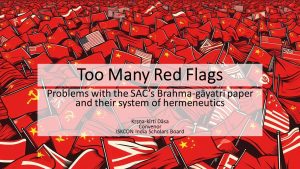Addressing Allegations and Guru Standards in ISKCON
The International Society for Krishna Consciousness (ISKCON), founded by His Divine Grace A.C. Bhaktivedanta Swami Prabhupada, has faced various questions regarding its practices, leadership, and adherence to tradition. This essay addresses two significant inquiries: the allegations of Srila Prabhupada’s poisoning by his disciples and the mechanisms for ensuring the quality and integrity of ISKCON’s initiating gurus. Drawing on official statements, historical context, shastra (the sacred scriptures of Sanatana-dharma) and institutional policies, this discussion aims to provide clarity on these matters while situating ISKCON’s practices within the broader Vedic tradition.

